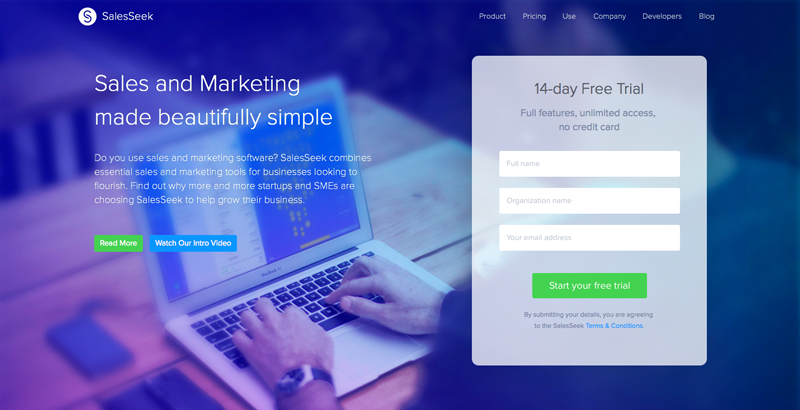Demand for integrated sales and marketing (ISM) solutions will soar, as enterprises realize the potential to increase leads by enabling sales people to run their own marketing campaigns.
HubSpot is the latest marketing automation software provider to recognize sales departments need integrated marketing and CRM systems, facilitating the effective transition of leads between sales and marketing departments.

HubSpot’s marketing software helps marketing teams manage sales leads with customers on email, social media, websites and blogs. It recently complemented this with the launch of a sales acceleration product, Sidekick, and plans to officially launch an integrated CRM system in 2015. This is big news for the industry, as CRM software is traditionally split into three areas: sales automation, marketing automation and customer service.
Sidekick helps with prospecting, connecting and engaging with potential leads through real-time engagement notifications. HubSpot CRM will apparently provide customer data that will enable sales teams to pick up leads as they move out of marketing and offer a single-view of interactions.
A single solution
To make the most of sales and marketing opportunities the customer journey needs to be viewed across all touchpoints during an entire lifetime. Consequently, sales and marketing systems should work together and share information. Having separate systems hinders productivity and results in opportunities being missed, as marketing and sales people have to switch between applications and are unable to access key customer data. This is also extremely time-consuming.
For example, when someone anonymously visits your website you need context – to quickly find out who they work for, their role and any opinions they may have shared online about your company or industry. This allows you to automatically respond with content that is relevant and make sure they are placed in the sales funnel of the most appropriate sales person, so opportunities can be followed up and don’t get lost. If marketing and sales functions are divided, sales teams will be unable to do their job properly and unsuitable content will be sent by marketing departments.
Tools for social selling
Because people increasingly use search engines and social media to research products and services online, businesses need integrated tools for social selling. It’s important for sales people to be able to interact directly and engage customers on social media. They must be able to publish personalized content to contacts and manage their own lead generation.
From the beginning SalesSeek (SS) built sales and marketing automation functionality into one ISM platform. This may sound like a lot of tools, but we have made it extremely visual – it’s simple to use and information can be presented in graphics. Best of all, marketing and sales teams can work together ensuring customer relationships are nurtured and consistently managed.
Software mashups
Young, mid-sized businesses are particularly successful with marketing technology and social media, as they don’t tend to have a strong divide between sales and marketing and are less likely to be tied to traditional marketing methods, such as mass email.
However, the VentureBeat Marketing Automation Index report revealed that more than half of all companies using marketing automation use more than one system.
Management at young, mid-sized companies also tend to be savvy about technology. And thanks to open cloud application programming interfaces (APIs) they are able to mashup marketing platforms, gluing together a number of different products to meet their businesses needs.
Marketing automation software moves mainstream
The VentureBeat report also talks about the huge growth in the marketing automation industry. Author Wendy Schuchart said: “There’s tremendous growth, tremendous opportunity, and tremendous upheaval. Even after years of 50 percent industry growth, only about three percent of non-tech companies have adopted marketing automation.”
It’s an exciting time for marketing automation companies, particularly as so many mid-sized firms are yet to invest in sales or marketing platforms. To fund growth and seize market opportunity, HubSpot hopes to IPO and raise $100 million.
Big technology companies are snapping up marketing software businesses to meet demand for marketing automation features from their customers. To name a few: Oracle bought Eloqua, and Salesforce.com bought ExactTarget, which had already bought marketing automation provider Pardot.
The Bulger Partners report, Marketing Technology Overview, reveals that typical valuations in recent M&A transactions of marketing technology vendors were a whopping 5x TTM revenue.
But it’s far from clear whether marketing automation will be sustainable as a standalone market. As it moves mainstream, we believe most companies won’t want to mashup solutions and that the convergence of sales and marketing functionality is inevitable.
Take advantage of a 14-day free trial of SalesSeek. Start your free trial with SalesSeek today.

